As if feeding kids wasn’t challenging enough, toddler allergies can throw a whole other big giant wrench into the equation. To help make it easier to grocery shop, eat out, and thrive with food allergies, this guide is here to help.

Toddler Food Allergies
Food allergies have been on the rise, and they often catch parents off guard—what can my child eat? Can we ever eat out again? How do I cook for my family now? The only good news in the face of a food allergy diagnosis is that it’s easier than ever to deal with food allergies in kids now because there is much more awareness and allergy-friendly foods on the market.
And right at the start, if you have a new diagnosis, it may help to make a big list of all of the foods you or your child can enjoy. This helps to start from a place of abundance, rather than scarcity.
Plus, if you’re looking for recipes, these pages should help. (If the main recipe has eggs, dairy, or wheat, look in the Notes for the variation.)
- Egg-Free Recipes for Kids
- Gluten-Free Recipes for Kids
- Dairy-Free Recipes for Kids
- Nut-Free Recipes for Kids
- Peanut-Free Snacks
Table of Contents
- Toddler Food Allergies
- Food Allergies in Kids
- Do allergies run in families?
- Top 8 Food Allergies
- Food Sensitivity Symptoms in Toddlers
- How soon after exposure do reactions occur?
- Meet Megan Lavin
- Best Pantry Staples for Families with Food Allergies
- Easy Allergy-Friendly Meals
- Top Store-Bought Snacks for Kids with Food Allergies
- Resources for Newly Diagnosed Families
- How to Eat Out with Food Allergies
- How to Pack School Lunches for Kids with Allergies
- How to Set Up Your Child's 504 Plan at School
- Best Tips for Raising Kids with Food Allergies
Your toddler won’t eat? Help is here!
Sign up for our email updates to get tips and ideas sent to your inbox.
Food Allergies in Kids
According to the American College of Allergy, Asthma, and Immunology, 4-6% of kids now have a food allergy. We all know that our immune systems keep us healthy by fighting off infections and other dangers, but a food allergy reaction occurs when:
The body’s immune system overreacts to a food or a substance in a food, identifying it as a danger and triggering a protective response.
TIP: Food allergies can manifest as minor reactions or severe anaphylaxis. A food that initially causes a reaction may not do so forever.
Do allergies run in families?
Some allergies do run in families, though 2/3 are not genetic and it’s impossible to predict. Check in with your doctor if you have a family history of food allergies as the way you introduce potentially allergenic foods may differ from conventional advice.
 Top 8 Food Allergies
Top 8 Food Allergies
90% of all food allergies are to one of these eight foods:
- Eggs
- Dairy milk
- Peanuts
- Tree nuts (such as almonds, Brazil nuts, cashews, hazelnuts, pecans, pistachios and walnuts)
- Fish (like tuna, halibut, or salmon)
- Shellfish (like shrimp, crab, and lobster)
- Wheat
- Soy
TIP: Sesame seeds (often in hummus) and mustard seeds (in conventional mustard) are often considered to be a top allergen too.
Food Sensitivity Symptoms in Toddlers
Here are some of the symptoms you may see if your toddler is having an allergic reaction to a food:
- Vomiting and/or stomach cramps
- Hives
- Shortness of breath
- Wheezing
- Repetitive cough
- Shock or circulatory collapse
- Tight, hoarse throat; trouble swallowing
- Swelling of the tongue, affecting the ability to talk or breathe
- Weak pulse
- Pale or blue coloring of skin
- Dizziness or feeling faint
- Anaphylaxis, a potentially life-threatening reaction that can impair breathing and send the body into shock; reactions may simultaneously affect different parts of the body (for example, a stomachache accompanied by a rash)
How soon after exposure do reactions occur?
According to the ACAAI, “Most food-related symptoms occur within two hours of ingestion; often they start within minutes. In some very rare cases, the reaction may be delayed by four to six hours or even longer. Delayed reactions are most typically seen in children who develop eczema as a symptom of food allergy and in people with a rare allergy to red meat caused by the bite of a lone star tick.”
For help determining the cause of a reaction, always reach out to a medical professional. Start with your pediatrician and know they may refer you to a pediatric allergist.

Meet Megan Lavin
To help, Megan Lavin from Allergy Awesomeness is here to share her staples. She had to quickly learn to navigate the world of food allergies when her oldest son was diagnosed with more than 30. She now helps other families navigate the world of food allergies through resources, recipes, and cookbooks—including a new one with allergy recipes for the Instant Pot. She was generous enough to share some of her best advice to help families living with food allergies eat well and stress less. Thank you Megan!
Best Pantry Staples for Families with Food Allergies
Megan recommends starting with fresh fruits and vegetables since these are naturally allergy-free. “My kids love to snack on cucumbers, sugar snap peas, bell peppers, apples, olives, bananas, pears and mandarin oranges. And, the best part about these? You can get them anywhere, no need to go to a specialty store for them!” In addition, she stocks these foods in her pantry:
- Earth Balance Buttery Spread
- Gluten free pasta (such as Barilla, Jovial, or Banza or rice noodles)
- Coconut oil (for baking)
- Olive oil (for cooking)
- Safe milk (such as soy and rice milks)
- Vegan mayo
- Gluten free flour
- Safe bread (such as Little Northern Bakehouse)
- Corn tortillas
- Safe yogurt (such as Silk and So Delicious)
- Safe grains such as quinoa, millet, and rice
- Safe beans and legumes such as lentils, red lentils, white beans, and black beans
- Sunflower seeds
- Sunbutter
- Reduced-sodium tamari (instead of soy sauce)
- Dairy-free chocolate chips
TIP: Always adjust what you buy based on the actual allergies in your house as every family will have different needs. By “safe”, I mean ones that are safe for your particular allergy situation.
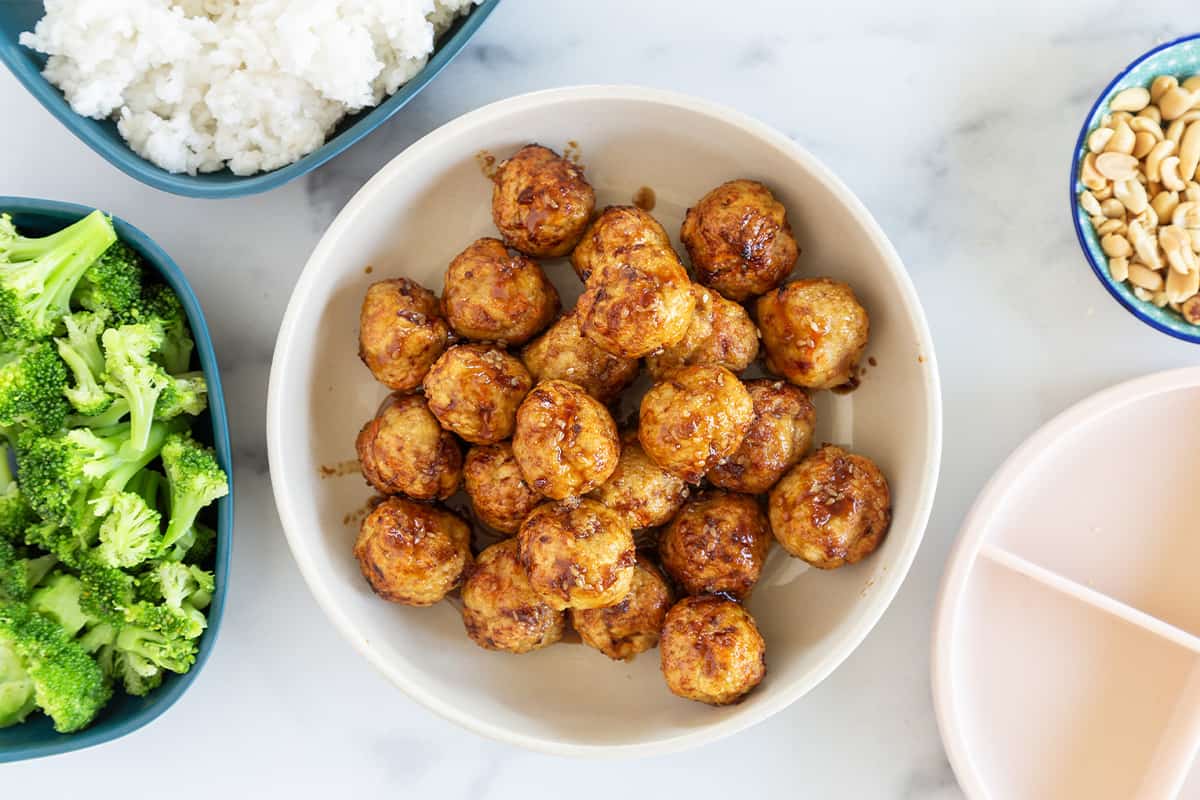
Easy Allergy-Friendly Meals
These easy dinners are made without common food allergies, though you may of course need to adjust them for your specific situation. (Use dairy-free cheese as needed.)


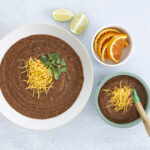


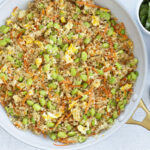


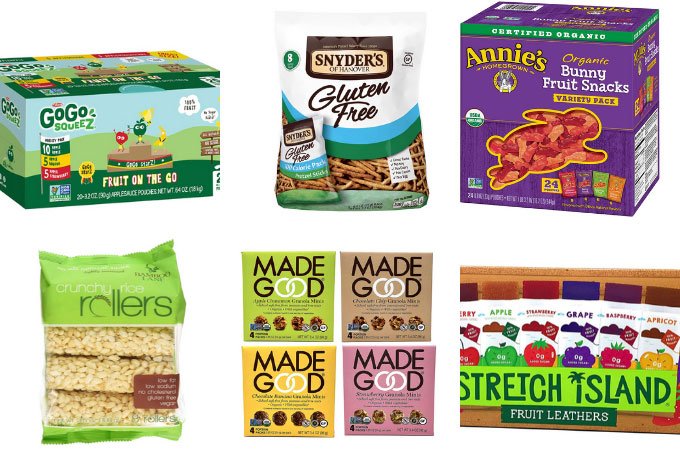 Top Store-Bought Snacks for Kids with Food Allergies
Top Store-Bought Snacks for Kids with Food Allergies
“My kids could live off of applesauce squeeze pouches and Synder’s Gluten-free Pretzels. I almost always have them in my diaper bag,” Megan says. I also like the following products. (Always make sure to read ingredient labels to ensure you pick a snack that’s right for your child.)
- Crunchy Rice Rollers by Bamboo Lane
- Fruit Snacks
- Fruit Leather
- Made Good snack bars
- Enjoy Life Foods snack bars
- Enjoy Life Foods protein bites
- Fruit cups
- My Super Cookies
- That’s It bars
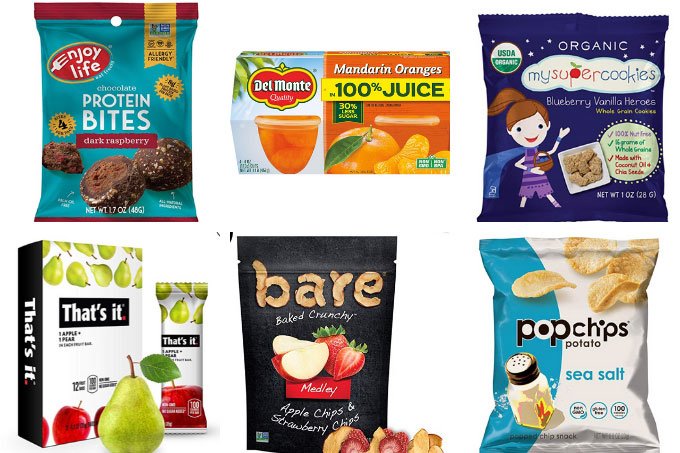
- Apple Chips
- Pop Chips
- Sunbutter Snack Cups
- Nature’s Bakery Gluten-Free Fig Bars
- Enjoy Life Lentil Chips
- Real Food from the Ground Up Cauliflower Crackers
- Rice Cakes
- Magic Animal Crackers
- Cereals like Rice Krispies, Crispix, Kix, and Chex
TIP: You can find my favorite dairy-free recipes here.
Resources for Newly Diagnosed Families
Megan suggests that we: “Allow yourself to grieve. Losing a food can feel like losing a friend. Don’t feel ashamed to feel bad—let the emotions come, but then let them go and realize that YOU CAN DO THIS. This will become your new normal and you’ll become so used to it.”
And then to move on to the more nitty gritty. “Learn to read a label and understand FALCPA. This is CRUCIAL in keeping yourself safe, sane and not getting suckered into buying expensive “allergy friendly” products, when many foods can still work for you. I’d recommend using good resources like FARE, AAAAI and Allergic Living Magazine,” she says.
How to Eat Out with Food Allergies
Here are a few steps that Megan suggests we follow if eating out with food allergies in the mix.
- Never go somewhere just because it sounds good. Instead, research the menu online beforehand so you know what may work and what to expect.
- Then, try to go when it’s not busy or not during peak hours so you can have the restaurant’s time and attention.
- Order with the manager to make sure that they understand that you have life threatening allergy, and not just an intolerance or dietary preference. “You also want to order with a manager because waiters often come and go and may not be as familiar with the menu and kitchen processes as a manager,” Megan explains.
- Always have two Epi Pens on hand, just in case of an emergency.
TIP: Here are a few ideas for restaurant chains that treat food allergies seriously.

How to Pack School Lunches for Kids with Allergies
“When in doubt, always pack your own daily school lunch,” Megan says.” I know it’s more work, but when you have seven food allergies like we do, I don’t feel comfortable with the school taking that on, even if they’ve offered,” she says. (See her list of her son’s favorite allergy friendly school lunch ideas.)
TIP: Be sure you know how allergies are handled in your child’s lunch room. Sometimes peanuts are off limits to everyone, sometimes there’s a peanut table. If your child will need to sit at a dedicated table, be sure he always has a friend who can sit with him so he’s not left out.
How to Set Up Your Child’s 504 Plan at School
Under the USDA, any school that receives public funding would be able to create a 504 plan for a child with a serious food allergy. They say: “Section 504 allows you to create, in collaboration with the school, a 504 Plan, which is a written management plan outlining how the school will address the individual needs of your child, and allow your child to participate safely and equally alongside his/her peers during all normal facets of the school day.”
This means that a few steps can be taken to ensure that your child’s is safe. Here’s a list of a few additional steps you may want to take during the process of setting up the plan at the start of each school year.
- Meet with the teacher and school nurse at the beginning of the school year and set up our 504 Plan. You may also want to make sure that if there’s another person who helps administer the 504 plans, they are looped in too.
- Talk through the IHP plan, or the Individual Healthcare Plan that will ensure everyone knows what to do if anaphylaxis occurs.
- Share a list of allergy-friendly treats with the teacher and school nurse. This will take all of the guess-work out of it for them.
- Request that the list—and the fact that there’s a child with a serious food allergy—be shared with all of the families in the classroom.
- Provide a bag of “safe” treats that the teacher can keep on hand in the event that another child brings in a food that your child can’t eat. This will ensure they will still be included in the fun.
- Volunteer to handle the food for any class parties that will involve food so you can know firsthand that it’s safe.
- Assume that you’ll need to check in with each new teacher, either at the start of the school year or if a teacher change happens mid-year.
Best Tips for Raising Kids with Food Allergies
Here are some of our best tips for making the best out of a challenging situation with food allergies.
- “Learn what your tolerances are,” Megan says. Your allergist can help you figure out if you can be in the same room with an allergen and/or if you’re contact reactive. This means that you may not have to avoid all places with people and food just because there’s a food allergy in the mix.
- “Always be prepared with your Epi-Pen,” Megan says. This way, you can still enjoy normal activities with your kids, while keeping them safe.
- “Take into consideration your child’s age AND maturity level. My oldest son is great at not eating food unless he’s asked me, so I can trust him in most cases. My second son is the type to eat first and ask later,” she explains. You’ll want to know ahead of time how involved you’ll be with the kids and their food so you can plan accordingly.
- “Always bring a safe snack,” she says. Because there is almost ALWAYS food involved, even if an activity didn’t list that there would be food.” Having a safe food for them ensures that they won’t feel left out.
- “Teach your kids that activities can be just as fun as food,” Megan says. Or that if they can’t partake in the treat/food right then and there, it’s OK.” You can also try to talk to your coaches about eliminating after game treats for everyone and focusing on the activity instead.
- Stock your pantry with foods that everyone in the house can eat so you don’t have to make separate food for just one family member and risk them feeling left out.
- Stock your kitchen with safe snacks so the kids feel like they have access to a range of healthy and delicious foods.
- Keep a running list of meals that the entire family loves so you don’t have to reinvent the wheel each week when it’s time to decide what’s for dinner.
- Keep a running list of favorite allergy-friendly products so you don’t have to do research every single time you go to the supermarket.
- Communicate regularly with care providers, daycare centers, and schools to ensure that everyone is on the same page.
Related Posts
I’d love to hear your tips and questions on raising kids with food allergies, so please comment below to share or offer feedback!
This post was first published on November 23, 2019.
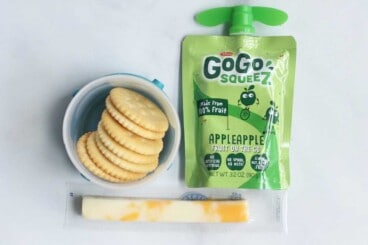
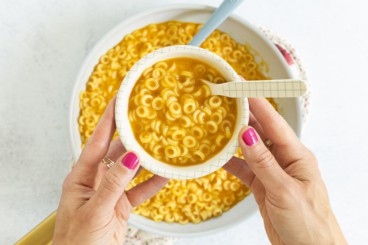
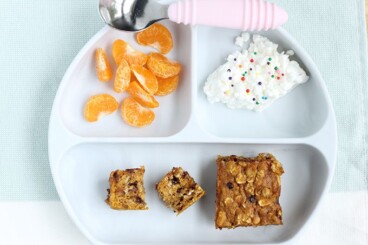

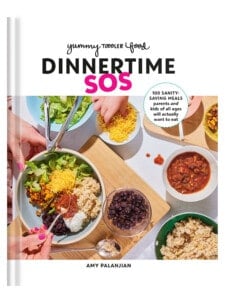
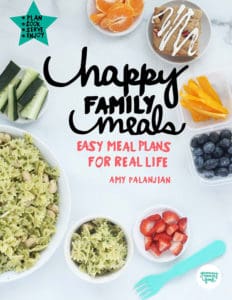
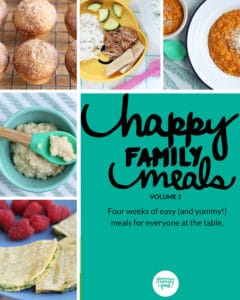
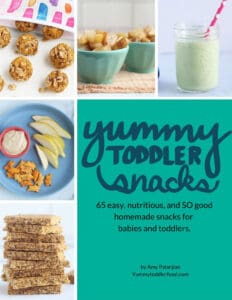














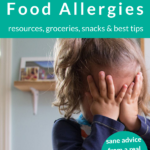
Hello my 19month old has always had tummy problems since he was born a premie at 27 week. We finally got the allergy test done and he’s allergic to so many things. Cow(milk protein and beef), wheat, tree nuts, beef, turkey, barley, pineapple, peach, coconut, casein. On what planet can I feed my child proper foods without the things we eat almost everyday. I’m so stressed. Positive is we finally know what’s causing his tummy problems.
Hi- that does sound very hard. If you had the test done through a pediatric allergist, I would ask for a referral to a feeding therapist. (If you aren’t already working with a pediatric allergist, I would consult one. And hopefully they can make a plan challenge some of the foods as the kiddo grows.) You can also ask your pediatrician for names of feeding therapists. Or if you are unable to find local resources, I can offer some names of people who do virtual work. Given that list, I hope you can be supported in a one-on-one basis to reduce your stress.
I just found out that my 2 year old is highly allergic to milk, eggs, wheat, corn, and peanuts. She is now on soy milk and now that I completely stopped feeding her those things she isn’t breaking out in hives. So now I’m researching different things to feed her. Any advice or pointers will be helpful please and thank you.
One common piece of advice for this sort of situation is to make a long list of everything she can eat so you can start from a place of abundance. Then you can work on finding some allergy-free subs for foods she can no longer eat. I hope that helps.
My granson is also allergic to soy and eggs and milk. Also wheat and peanuts and host of other ingredients that are in everything.
.
questions what type of food allergies does your oldest son have? i have a 2 year old daughter who is eating everything normally like she always does and breaking out in hives everytime she eats or drinks something i have elinamated juices and tea she is now drinking water and unflavored pedilyte and we are on soy milk as well i dont know what to give her it is everything and anything right now she eats breaks out in hives drinks breaks out in hives goes outside breaks out in hives any suggestions?
Have you checked in with a pediatric allergist? That seems like it would be helpful here.
It is a pleasure worth reading this article as it provides us information on practicing compassionate medicine.It is one of the best options to read from here in detail. I would go for this site even in future when needed. Great blog indeed, will visit again future to read more!!
My grand daughter is allergic to eggs, soy, wheat and nuts
Please help with food that she can eat
Hi- If you go to this page https://www.yummytoddlerfood.com/recipe-index/ you can use the dropdown menu to look through the sections called “Egg-free” “Gltuen-free” and “Nut-free”. I don’t use much soy in my recipes, so you should be able to find a lot of options. All of the allergy subs for recipes are in the Notes at the bottom of the recipe so you may need to look there.
I love that you talked about how food allergies can catch first-time parents off-guard. My husband and I really panicked when we realized that our son might be allergic to nuts. I just hope that taking him to an allergy doctor to be checked will assure us that it won’t happen again.
Your feeding choices make a remarkable difference in your child’s likelihood of developing food allergy. Let’s look at how you can manage food allergy in your toddler.
https://www.parentcircle.com/article/food-allergies-in-your-pre-schooler/
Thank you so much for sharing! My son (19 mos) is allergic to eggs, soy, wheat, nuts, and pineapple. It has been quite the journey and is still a daily struggle finding foods safe for him to eat. We will definitely be checking out some of your snack options! Thank goodness for corn tortilla quesadillas (we add spinach).
Glad this was helpful and we hope you find some new favorites in the list!
How do I figure out what to feed my grandson.. He is 16 months old and we thought he had eczema then found out it was sue to him being allergic. To peanuts, soy, milk, egg whites, wheat, corn.. I am new here
I would start by writing out a list of all of the foods he can have, starting with basic ingredients. Then a list of recipes you know he can have and usually likes. Then you can expand on those lists by looking for similar foods. You can also search for specific ingredients using the search bar on my site and you can filter by dairy-free, gluten-free, and nut-free to narrow things down more. Please let me know if I can help more!